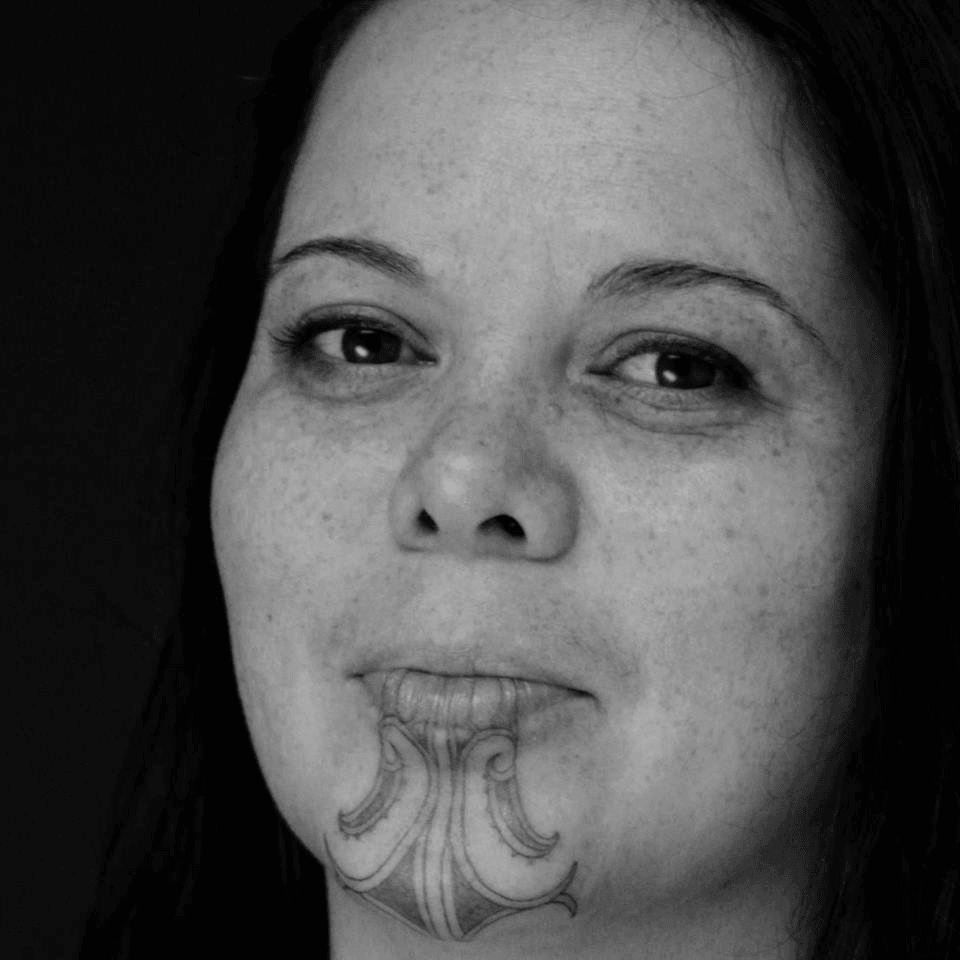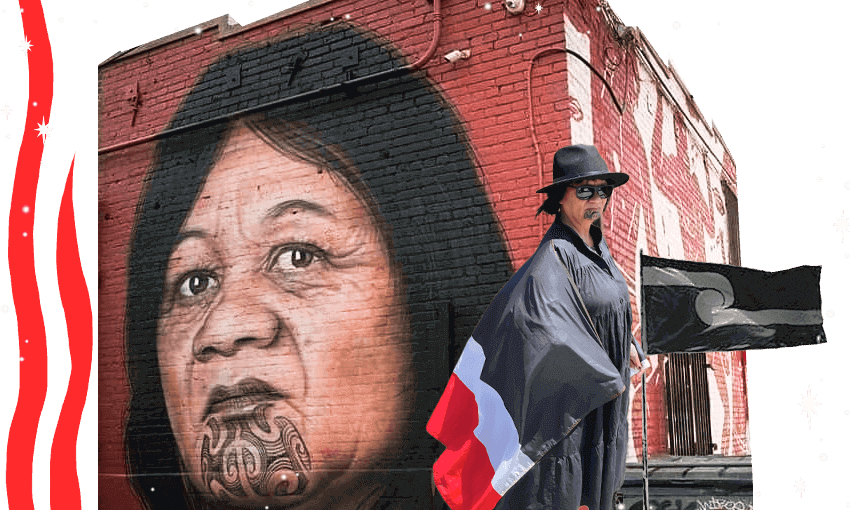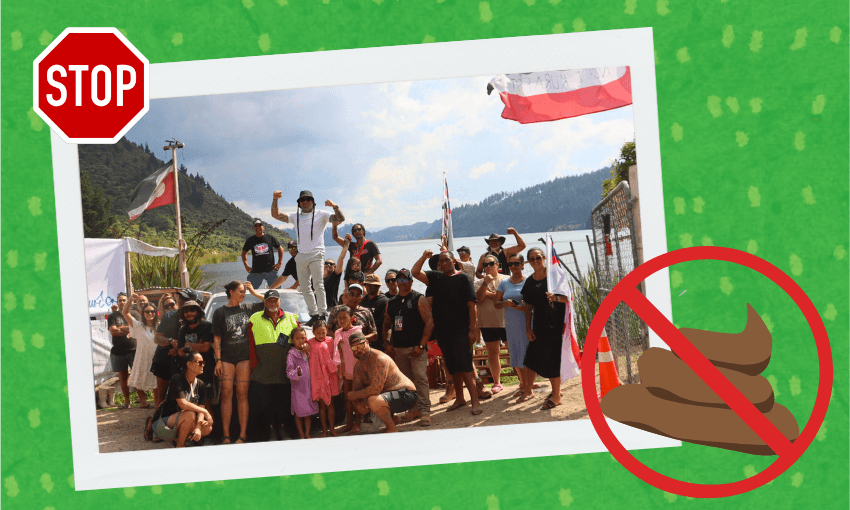We have allowed a prime minister to be subjected to an unprecedented level of violent, sexist attacks – it would only be worse if they were Māori, writes Tina Ngata.
A version of this article was first published on the author’s website.
When I first heard that prime minister Ardern had resigned, it was on a messenger thread… I’d missed the earlier message and just caught the notification on my screen of the response by a cousin. It read: “No way… Ardern is gone??”
For a brief moment I didn’t want to click on it. My gut had dropped, and my mind raced ahead as time seemed to slow down.
I thought, for a brief horrifying moment, she had been killed.
Time caught up with itself as I clicked and scrolled up to see she had resigned – but I was left with the chill of how natural my assumption was, and the simple reflection of what that must mean for her.
For the record, I do agree that Jacinda Ardern has been the best prime minister we have had. I’m extremely grateful that, in the current system, we had her in charge during the early stages of the pandemic – her counterpart would have overseen much more death. I’ve critiqued her as I would any other colonial leader, and all leaders should be open to critique. However, what she has been subjected to over the past few years is not critique but violent, dehumanising, depraved attacks that, when boiled down, have little to do with her decisions so much as the fact that she is a woman who is not far-right.
Over the past few days, I’ve watched the speculation around her decision (most agree it’s at least in part due to the extreme misogyny) and the natural assessment of her performance. I’ve also watched Māori social media call up various Māori MPs to step into her role. I’ve read people question “is it time?”, “is New Zealand ready for a Māori prime minister?”. I guess given the strength of the Labour Māori caucus there is some logic to even considering that question.
I’m at a loss, however, to understand why on Earth anyone would assume New Zealand is ready for a Māori prime minister in the current climate, given how we have allowed a white woman prime minister to be treated.
Clip with @sanjanah gives glimpse into the kind of daily abuse Jacinda Ardern had to weather. pic.twitter.com/CmPtNbVZnP
— Justin Pemberton 💬 (@justinsight) January 19, 2023
Now imagine the reality above, every day of your life, for years. Not getting better, only getting worse. In all of the speculation about Ardern’s performance, we are missing what this is saying about us. Being progressive isn’t just about voting in a young, female leader, it’s also about how we respond to their leadership once they are in office. We have allowed a prime minister to be subjected to an unprecedented level of violent, sexist attacks. As a nation, we have collectively failed to insist upon the necessary changes to prevent that hate. Racism plays a huge role in this too – a significant number of the more violent and worrisome attackers also subscribe to the “great replacement” theory, accusing Ardern’s government of allowing for a “takeover” by Māori or other non-white immigrants. The subtext to that is clear – New Zealand is meant to be white, and any diversion from dominant whiteness is a threat.
The truth of the matter is, for those of us who are committed to Mana Motuhake and Tiriti justice, Ardern presented a conundrum. She is progressive enough to avert radical decolonial change (she repeatedly dismissed the value and possibility of constitutional transformation) while still being politically wedded to a system that is overarchingly patriarchal, capitalist and colonial in nature. In no way did she deserve the treatment she was subjected to – and that treatment is also the natural distillation of the political system she has defended in maintaining the status quo. It is a system that prioritises protection of patriarchal colonial privilege above all else. A system that would not provide protection for women (even its own leader) against extreme misogyny – because it is inherently misogynist itself.
The driving logic behind a Māori prime minister is clear: Māori leadership will result in enhanced policies that will guarantee the advancement of Māori interests and wellbeing. These expectations are reminiscent of Obama’s presidency as the first Black President of the United States – however it didn’t quite work out that way. Socio-economically, Black socio-economic progress slowed under Obama, and the percentage of Black families in poverty never reduced. Obama introduced policies that increased standardized testing in schools, with predictably terrible results for Black students; districts with more white students received more funding and critical race theory was still not embedded in US curriculums. In spite of committing to closing Guantanamo, it remained open. In spite of promising to reduce US led conflict overseas, US military activity increased with a record breaking $200b in arms deals under his term. Police killings of Black people continued to increase under Obama.
But more troublingly (and this is my point), race relations degraded under Obama, which paved the way for a someone like Trump to enter the White House directly after him. We are now in a similarly tense and neglected space for race relations here, and it’s very likely that a non-elected Māori prime minister would be a very brief term, within which time they would achieve very little, but it would stoke white nationalist anxiety and could increase the chances of a more extreme right government in the next election.
An extreme right government right now would undo a lot of our recent progress, and would push us further away from constitutional transformation, which is where the real transformation happens.
White supremacy and colonialism are systems. They require systemic change, not brown figureheads.
So when I hear my relations calling Māori MPs up to the role of prime minister, I recoil. If this is how a white woman is treated in the current political climate, what do you think a Māori prime minister will be subjected to – even moreso, a wāhine Māori prime minister? If you need further explanation – check out the recent findings from the Disinformation Project, which has tracked wāhine Māori as the most targeted group for online hatred within New Zealand social media. The risk of a violent act would increase exponentially (and it is already quite high).
Without a doubt, te ao Māori is ready to lead New Zealand, but New Zealand has proven itself to be far from ready for Tiriti-centered leadership. Even though there are Māori MPs in parliament right now that undoubtedly have the goods to lead, there is no way I would ask any Māori politician to step into that role right now, in the current climate. It’s physically perilous, mentally dangerous, and politically unwise. The center-right that drifted across to Labour for the past two elections is being courted back by the far right, and their own ingrained, normalised misogyny is their weak spot. The current polarization of New Zealand politics calls for a center-right male who doesn’t (by just existing) stoke toxic white male anxiety. I want to be clear in what I’m suggesting here: the call for a center-right white male is not a reflection of the leader, or their qualities – it is a reflection of how normalised racist misogyny has become in New Zealand society.
Last election, New Zealand wanted continued protection. This election, those drivers are irrelevant. People have had more than enough change in recent years – hence why so many are willing to take risks with their own health as a pandemic still continues around them. Voters are looking for comfort, familiarity and a sense of “returning to normal”. For all of the tumultuous times Ardern has led New Zealand through (and arguably because of them), she cannot be synonymised with normal. Normal and familiar, within the scope of the past 500 years, is a white, thin, able-bodied, cishet male. Chris Hipkins will be attacked for many things, but not for merely existing.
But this cannot be our aspiration. What I have described above is a consequence of a deeply sick and harmful system that needs fundamental change. Regardless of how well Hipkins performs, it is supremely unjust that his gender, race, ability and sexual orientation – and what that means for his safety – should be the grounds upon which we appoint a leader. Tiriti justice does not look like a Māori prime minister within a Westminster parliamentary system (which our tīpuna never consented to), a system designed to strip us of our rights and undo any progress every four years. Euro-parliamentary systems (and democratic capitalism) are deeply and inherently racist and misogynist and cannot help but beget further racism and misogyny.
A Tiriti-centered political system, anchored with tikanga like manaakitanga, tauritetanga and kaitiekitanga would look after its leaders better, as well as looking after Aotearoa better. That is where we must set our sights. That is what Tiriti justice calls us to focus upon.






